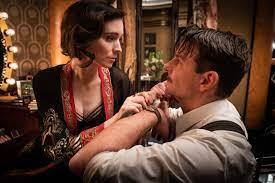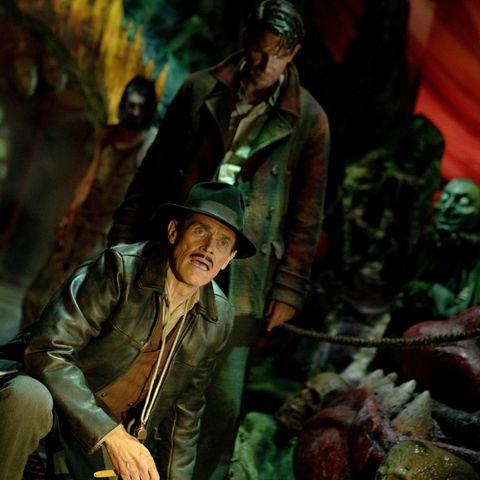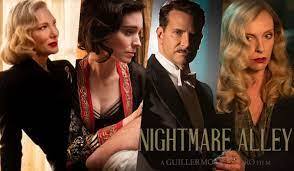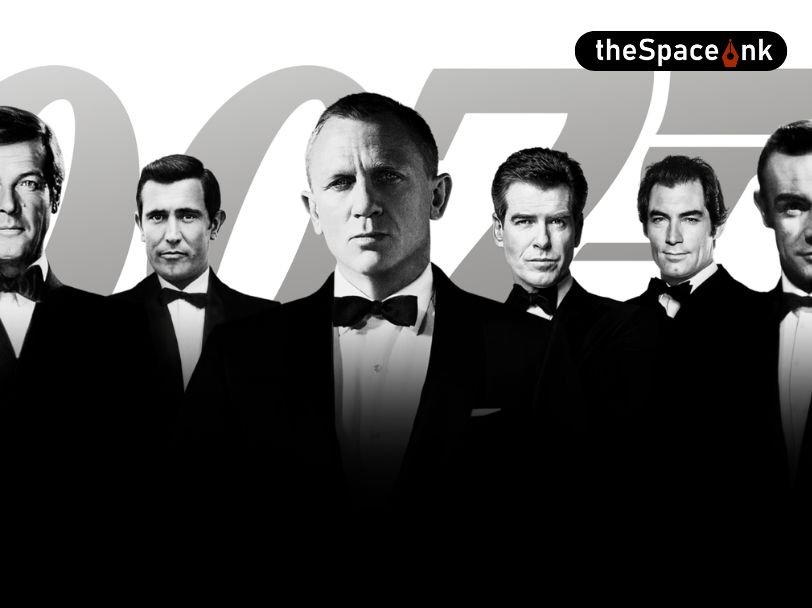After burning his house down with the body of his alcoholic father (for whose death he is solely responsible) inside it, a desperate and guilt-ridden but smart and ambitious young Stanton Carlisle (Bradley Cooper), known as Stan, walks into a travelling carnival, a den of cheap tricks and deception. Leaving his grisly guilty past behind, Stan wants to begin life afresh. As he is in search of a living, he explores the various spine-chilling entertainments at the carnival and is particularly fascinated by the deplorable feats of a geek.
The geek used to be a familiar figure at the travelling carnivals sites of nineteenth-century North America. These carnivals consisted usually of an assortment of entertainment programmes along with food and merchandise outlets. Freak shows exhibiting the physical deformities of people who were considered freaks were an integral part of the carnivals. One might remember Joseph Carey Merrick (1862-1890), an English man with large facial protrusions owing to his proteus syndrome who performed freak shows across Europe under the stage name, ‘the elephant man.’ Merrick who became a household name all over the world is the most known freakshow performer ever. As a preamble to a freak show, a geek show used to be performed. A geek-show performer (usually a man) known as a geek entertained the audience by means of his odious tricks and loathsome behaviour such as biting an animal’s, especially a chicken’s head off and drinking its blood usually in a ring he is confined to. Inhabiting with rats and snakes in the ring, the life of a geek literally and metaphorically circumnavigated the boundaries of the human and the subhuman. People who were unfit for serious work, alcoholics, drug addicts and other maladjusted outcasts of society were introduced to the appalling role of the geek for minimal pay.
In the words of his owner, Clem Hoately (Willem Dafoe), the geek at the carnival that Stan walks into is “one of the unexplained mysteries of the universe;” and it is difficult to ascertain if he is a “man or beast.” Stan appears to strike an instantaneous and unconscious affinity with the geek who represents the fall of the human to the level of the subhuman, in other words, the fall of the man, the roof and crown of creation, to the level of the beast. Stan’s inexplicable fascination for and unconscious affinity toward the geek is a pivotal psychological moment around which his tragic story revolves.

Talking about the dynamics of the human unconscious, Carl Gustav Jung says, “Until you make the unconscious conscious, it will direct your life, and you will call it fate.” Clem is aware that a broken and desperate man with the baggage of a miserable past is seldom able to make the unconscious conscious. Hence, over a meal, he tells Stan that by making an already broken and desperate alcoholic or a drug addict picked up from “nightmare alleys, train tracks, flophouses” drink opium-laced alcohol and by manipulating him psychologically, one can strip his humanity and make a geek out of him. All that one has to do is to prey on a desperate man with a troubled past by offering him first this deadly magic drink and then a temporary job as a geek and manipulating his psychological vulnerability. The drink entices him to abandon all his hope and stay confined to his assigned dingy dirty pen as a confirmed geek who would bite the heads off chickens thrown at them, drink their blood and devour their flesh because that is all that is there for him to eat. At this stage, his fall from the state of the man to the state of the beast is complete.
Guillermo del Toro’s 2021 neo-noir psychological thriller film, Nightmare Alley, adapted from William Lindsay Gresham’s 1946 novel of the same name tells the story of Stan whose life and career seem to be scripted on Jung’s theory of the dynamics of the unconscious. Stan fails to make this unconscious affinity that he feels for the geek conscious, and hence, as his career comes a full circle, he accepts a proposal to work as a geek; and he does so confessing with pathetic laughter and in tears, “I was born for it.”
Stan appears to strike an instantaneous and unconscious affinity with the geek who represents the fall of the human to the level of the subhuman, in other words, the fall of the man, the roof and crown of creation, to the level of the beast. Stan’s inexplicable fascination for and unconscious affinity toward the geek is a pivotal psychological moment around which his tragic story revolves.
The sequence of events that follows his first encounter with a geek until his fall into the appalling abyss of the geek takes place at a breath-taking pace. After having seen a geek show at the carnival, he explores different programmes at the venue, learns the deceptive art of reading minds and guessing objects while blindfolded by means of coded language and cold reading from Zeena the Seer (Toni Collette) and her husband Pete (David Strathairn). With his newly acquired skills, he elopes with a fellow performer, Molly Cahill (Rooney Mara), and begins a more respectable and successful career as a psychic and spiritualist among the elite in Chicago with Molly as his associate. While the imposter psychic in him convinces the naïve, the weak and the grief-stricken that he possesses extrasensory perception with which he can access information hidden from the senses, the imposter spiritualist in him convinces them that he possesses the power to summon and communicate with the spirits of the dead. His greed for money, power and popularity spurs him on to disregard Pete’s warning about the danger of playing the deceptive spiritualist and performing ‘spook shows.’ Against Molly’s objections, his voice of reason, he allows his tricks to evolve along destructive lines. He makes false promises to Judge Kimball (Peter MacNeill) and his wife and dupes the naïve couple using the information that he learns from psychologist Dr. Lilith Ritter (Cate Blanchett).

As he tries to hoodwink Ezra Grindle (Richard Jenkins), one of Ritter’s former patients, he lands in trouble. He gets caught in his own web of lies and deception as his stage-managed show spins completely out of control.
Finally, as a fugitive in penury, Stan finds refuge in alcohol and eventually ends up in a carnival where he is offered a drink and the temporary job of a geek exactly in the manner explained to him by Clem at the start of the story. As the dishevelled, dirty, stinking and semi-dehumanised Stan accepts the offer saying, “Mister, uh … I was born for it,” with stoic laughter and pitiful tears that manifest his consciousness that he is dammed beyond redemption, the audience realises that his fall from the level of the human to the level of the subhuman, from the level of the man to the level of the beast is complete.
The French term, film noir, meaning, ‘black film or dark film,’ refers to American crime films of the 1940s and 1950s that were inspired by hard-boiled American fiction depicting a noxious view of human existence thus far not seen in films. A by-product of the Great Depression and World War II, this noxious view was characterised by deep-seated pessimism, gnawing cynicism, protracted disillusionment, distorted innocence, ill-fated romance, amoral sexuality, acquiescence to fatalism and haunting insecurity. In consonance with the theme, film noir is usually set in shadowy, dark and lacklustre urban settings and is shot in ramshackle buildings, claustrophobic places, murky lanes and so on in black and white with very little or no gray tones. The use of German expressionistic cinematic techniques, dramatic chiaroscuro, theatrical and stylised narratives are characteristics of the genre.

While treachery, intrigue, gang wars and crime set the order of the day in the noir genre, its narrative is studded with cigarette-smoking hardened men, femme fatales and antiheroes. Its protagonist is often a former criminal, an outcast of society, a former police officer or a detective who is highly fallible, self-destructive and almost fatally trapped in an inherently corrupt world. Since the viewers are forced to navigate a world of moral ambiguity in the noir genre, most classic noirs culminate in poetic justice wherein vice is punished, and virtue is rewarded.
In his hubris, Stan in Nightmare Alley turns a deaf ear to Pete’s words of caution. “When a man believes his own lies, says Pete, “starts believing he has the Power. He’s got ‘shuteye.’ He now believes it’s true … you lie and you lie… and when the lies end, there it is: the face of God, staring at you straight, no matter where you turn… No man can outrun God, Stan.” The price that Stan pays for his hubris-driven disregard for Pete’s words of warning and wisdom is his nightmarish fall. One might argue that it all began with his failure to make his unconscious greed for money, power and popularity by means of lie and deception conscious.
Images courtesy: The Playlist
Sacaria Joseph is an Assistant Professor in the Department of English at St. Xavier’s College, Kolkata. Having pursued his undergraduate studies at St. Xavier’s College, he furthered his academic journey by obtaining a Master of Arts degree in English Literature from Pune University, a Master of Philosophy from Jadavpur University, Kolkata, and a PhD from Visva-Bharati University, West Bengal. In addition to his academic pursuits, he writes on a wide array of subjects encompassing literature, philosophy, religion, culture, cinema, politics, and the environment.








